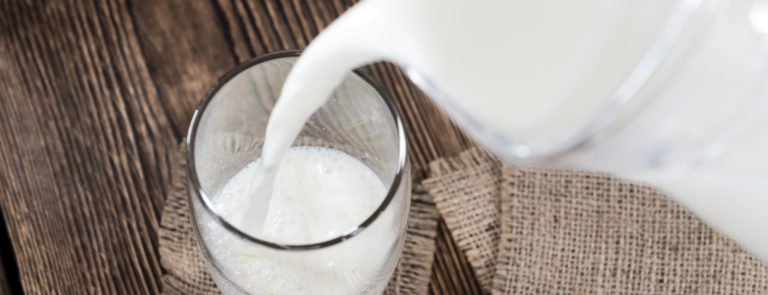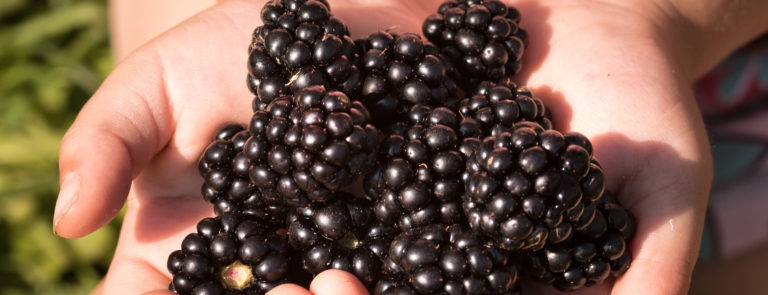15% off €35 OR 20% off €45
Can you freeze milk and drink it safely?

Milk’s fridge life is limited to only a few days, so if you have bought in bulk, it can quickly turn sour.
This doesn’t mean you can’t take advantage of great offers on milk. Many people don’t realise you can freeze milk – but it’s perfectly possible to do so safely if you bear a few things in mind.
But what should you be aware of when freezing milk? And what about non-dairy milks – can you freeze them too?
Follow the guidelines below to enjoy your favourite milk at its best.
Can you freeze milk?
Yes – you can freeze milk.
Milk freezes at around 0.5C – well above the average home freezer temperature of around -18C.1,2
Some home fridges can run as low as 0.5C – 1C, which is why you might wake up to icy shards your milk bottles if you’ve ever turned your fridge too low.
Can you freeze milk in plastic bottles?
Yes, milk freezes well in plastic containers. The plastic bottles milk is sold in are perfectly fine to freeze milk in after they’ve been opened, so long as they have a secure, airtight lid and are not full.
It’s important to never freeze a full container of milk. When it freezes, milk expands – which puts pressure on the container and causes it to burst.3 If this happens, frozen milk will likely adhere to other things inside your freezer, which can be a pain to clean up.
One to two inches of space at the top of your bottle or other container is sufficient to allow the milk to expand as it freezes.
You could also decant milk into a different plastic bottle, or other container made of plastic. Ziploc-type bags work well for freezing milk if you’ve not got room in the freezer for full bottles.
You could try freezing milk in an ice cube tray – we find that having milk ice cubes as opposed to a solid block inside a bottle makes the process of defrosting quicker. Just remember – don’t fill the ice cube tray to the brim to allow for liquid expansion!
Can you freeze milk cartons?
Milk cartons are not suitable for freezing. If you try to freeze them before opening, you’ll risk them bursting due to liquid expansion. Once you’ve opened the carton, the seal has been broken and the carton is no longer airtight, meaning you’d have to decant the milk into a different airtight container before freezing.
If you’ve recently stocked up on cartons of milk, relax, as sealed milk cartons should last up to six months on your pantry shelf (five days once they’ve been opened).
How to freeze milk safely
Freezing milk might take some foresight, as if milk is already starting to go off, freezing won’t restore its freshness. Think of the freezing process as a ‘pause’ button.
Freezing milk temporarily suspends chemical reactions and bacterial growth – the processes which make milk go off.4
Milk can only be frozen if it is not past its best before date, so check the expiration date first before using valuable freezer space.
Never freeze milk in glass containers, even if you leave a gap for expansion. Freezing milk in glass containers is likely to make the glass explode as the liquid expands, which is both messy and dangerous.5
You can freeze milk in large or small quantities according to your needs. By transferring it into appropriately sized containers, you can enjoy milk as and when you require it without regular visits to the shops.
Which types of milk freeze well?
-
Can you freeze whole milk?
You can freeze whole milk, but it doesn’t freeze as well as skimmed and semi-skimmed milk.
This is down to its higher fat content – whole milk is more likely to separate into water and fat. This will give the milk a curdled appearance – but so long as it was frozen within its use-by date, the milk is safe to drink.
-
Can you freeze condensed milk?
You can freeze condensed milk, but bear in mind that sweetened condensed milk will not freeze solid. This is due to its high sugar content.
Also, never freeze tins of condensed milk as they may explode – the milk must be transferred to a suitable container first.
-
Can you freeze soya milk?
Soya milk tends to degrade in quality once frozen, and separation of the ingredients is common once thawed.6 We find that frozen and thawed soya milk is excellent for making frozen desserts, smoothies and milkshakes.
-
Can you freeze evaporated milk?
Much like condensed milk, freezing evaporated milk is problematic as you’re likely to see significant separation between the milk solids and the liquid, which doesn’t return to its previous smooth state once thawed.
Thawed evaporated milk is fine to use in cooking and desserts.
-
Can you freeze formula milk?
You may be wondering if you can freeze formula milk, perhaps to make ice lollies with formula milk for when your little one is teething.
While some parents have given this a go, it’s generally not recommended to freeze formula milk as manufacturers haven’t tested it under these conditions. Further, formula milk does separate when thawed.7
-
Can coconut milk be frozen?
Yes, you can freeze coconut milk. Again, as with other milks, you may find the texture a little grainy and separated after freezing coconut milk then thawing it, but if using in baking, cooking or smoothies etc, it works well.
-
Can you freeze oat milk?
You can freeze oat milk. As with other milks there will be some separation during freezing that may make the texture of the milk grainy, making it more suitable for baking, cooking and frozen desserts and drinks.
-
Can you freeze breast milk?
Breast milk freezes well and keeps for up to 6 months in a freezer at -18C or lower. When you’re ready to use it, defrost it in the fridge and use immediately. Don’t re-freeze previously frozen breast milk.8
-
Can you freeze almond milk?
Much like other plant-based milks, almond milk is simple to freeze. Separation may occur after thawing, but pulsing it in a blender will solve this.
Summary
- Freezing milk pauses the process of going sour
- Freezing causes milk to expand, so leave extra room in the container to allow for this
- As milk freezes, the fat separates and this can result in a grainy texture - this is less noticeable with low-fat milks
- Most types of dairy and plant-based milks can be frozen, although the quality is affected in some cases and separation occurs
How to defrost milk
-
In the fridge
The safest way to defrost milk is in the refrigerator. Simply remove the container of milk from the freezer and place it in the fridge until the milk has become liquid again.
This method can take several hours though – not ideal if you’re in need of a cup of tea as soon as possible!
-
In cold water
To speed up the process of defrosting milk, you can immerse the container of milk in cold water (such as in the sink), replacing the cold water regularly as it warms up.
It is not advisable to thaw milk at room temperature as it affects its quality and increases the risk of harmful bacteria growth.
-
In cooking
If you’re cooking with milk, you can use it directly from the freezer. Depending on your container, you may not be able to do this, but you can break up frozen milk with a rolling pin and add it to a food processor or blender, or directly into a hot pan. This works best if you’ve frozen your milk in Ziploc bags.
How to defrost milk quickly
It’s technically possible to thaw frozen milk in the microwave, but it can destroy beneficial enzymes and even encourage microbial growth.9 For these reasons, it’s best not to use the microwave to thaw frozen milk.
The most rapid way to defrost it is the cold-water method in the sink (as above). We also recommend freezing milk in ice cube trays and popping out into a bowl to thaw. They defrost quicker than a full bottle.
Do not defrost milk at room temperature. This can be dangerous as it encourages bacterial growth.
How long does frozen milk last after it has thawed?
If freezing milk is like pressing ‘pause’ on its deterioration, you should only keep it for the number of days it had before its expiry date on the day you froze it.
So, if your milk was due to expire the next day when you popped it in the freezer, it will only last 1 day before it expires.
How long can you freeze milk for?
You can keep milk safely for up to three months in the freezer. Just check you have labelled and dated your batches of milk to ensure you use it within the recommended time frame.
The best uses for milk that has been frozen
Thawed frozen milk is great for:
- Pouring over breakfast cereals
- Adding to protein shakes and smoothies
- Adding to pancake or Yorkshire pudding mixtures
- Making milk-based sauces like white sauce, bechamel sauce and bread sauce
- Using in cakes and other baked goods
- Adding to dishes like creamy curries, potato gratin or macaroni cheese.
Frozen milk is great for:
- Dropping into a blender or food processor along with fruit to make an extra thick smoothie
- Whizzing up along with your favourite protein powder to make a protein-rich shake which tastes just like a milkshake.
Does freezing affect the taste of milk?
No – freezing and thawing milk, whether dairy or plant-based, should not affect the taste or nutritional properties of the milk.
Why you shouldn't freeze milk
The main reason why people are wary of freezing milk is the fact that it can separate and the texture of the milk can change during the freezing process.
To address this, try putting it in the blender for 30 seconds, or whisking it with a hand blender once it’s thawed will help combine the milk solids and milk liquids once again and restore its consistency.
Overview
- Most milks can be frozen for up to 3 months at -18C
- Defrosting in the fridge is the best option if you have time
- Don’t defrost milk at room temperature or in the microwave – this can encourage harmful bacterial growth
- Thawed frozen milk can be used for cereals, smoothies, cooking and baking
- Blending defrosted milk helps to restore its creamy texture and gets rid of graininess
Last updated: 03 May 2021
- https://www.researchgate.net/publication/313888107/
- https://www.food.gov.uk/safety-hygiene/chilling
- https://www.dairycouncil.co.uk/consumers/faqs/can-i-freeze-milk
- https://www.researchgate.net/publication/281538148/
- https://www.dairycouncil.co.uk/consumers/faqs/can-i-freeze-milk
- https://www.canyoufreezethis.com/can-you-freeze-soy-milk/
- https://www.bumpbabyandyou.co.uk/baby/should-formula-ever-be-frozen
- https://www.nhs.uk/conditions/baby/breastfeeding-and-bottle-feeding/breastfeeding/expressing-breast-milk/
- https://www.sciencedirect.com/topics/food-science/frozen-milk



